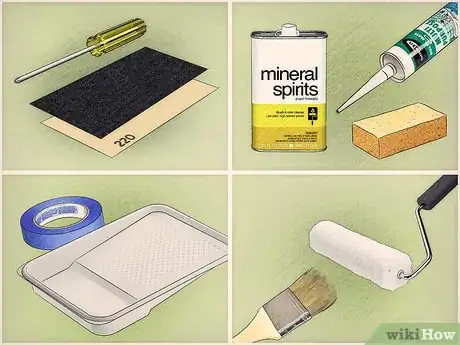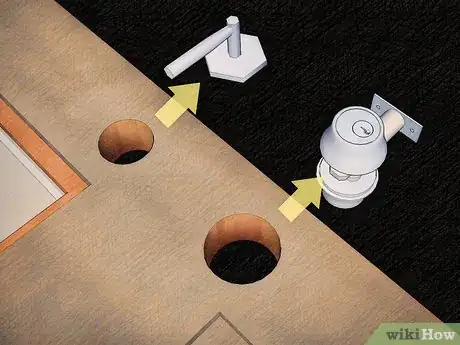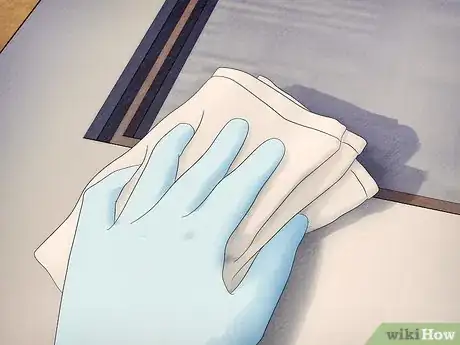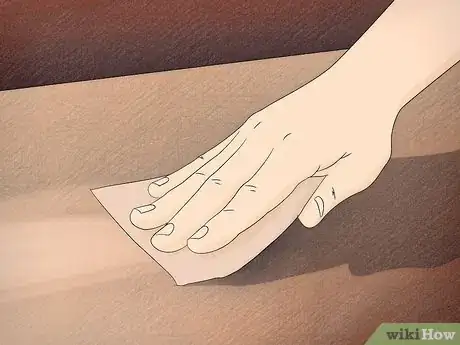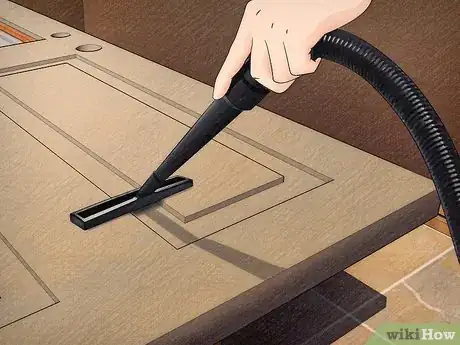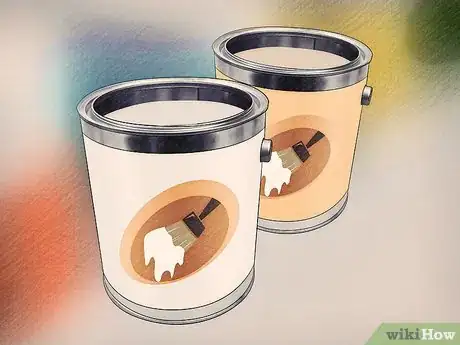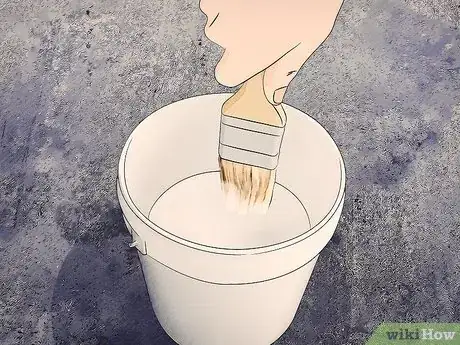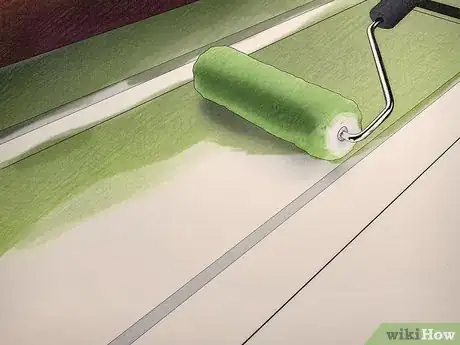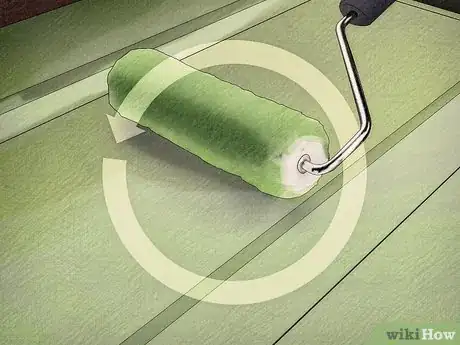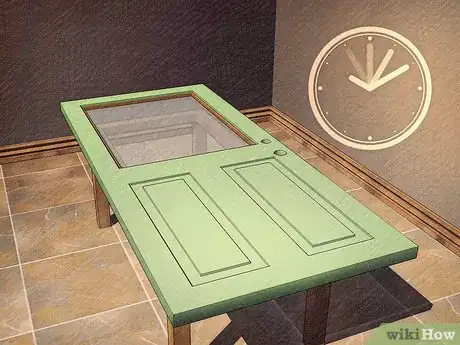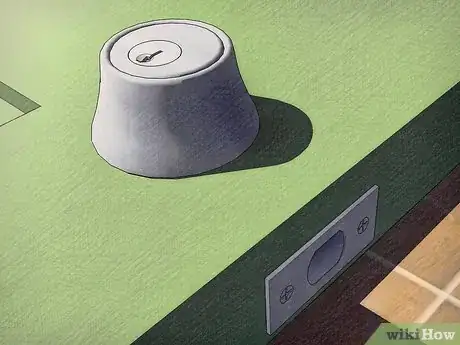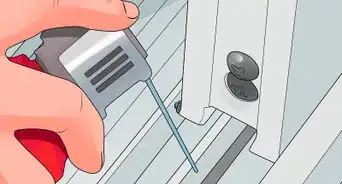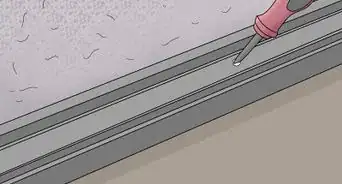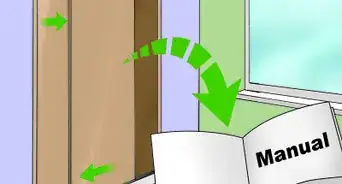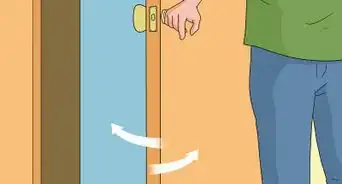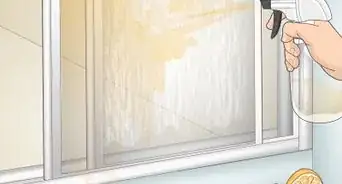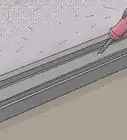This article was co-authored by Patrick Coye. Patrick Coye is the owner and operator of Patrick’s Painting & Home Improvement in Alexandria, Virginia. With over 15 years of experience in residential construction, Patrick specializes in painting, wallpaper removal/installation, drywall, staining decks and fences, and kitchen cabinetry painting. To date, Patrick and his team have painted over 2,000 houses and stained over 800 decks. Patrick's Company won a "Top Job" award from the American Painting contractor magazine in 2020.
wikiHow marks an article as reader-approved once it receives enough positive feedback. In this case, 100% of readers who voted found the article helpful, earning it our reader-approved status.
This article has been viewed 277,462 times.
Exterior doors, especially front doors, are often the first thing someone will notice about your house. And if you want to add character to your home, then painting exterior doors is a simple and effective way to change the look of your house. It’s best to remove the door from the hinges and remove all hardware first, but you can do a simplified method that involves taping up the hardware and painting the door in place.
Steps
Cleaning and Sanding the Door
-
1Gather your supplies. Before you can paint an exterior door, you need to clean it, sand it, and prime it, and this requires some tools. For this project, you’ll need paint and primer (if you’re not using a pre-primed, metal-clad door). Some products nowadays contain both paint and primer in one. Also:
- 220-grit sandpaper
- Screwdrivers
- Caulk
- Solvent, such as mineral spirits (for metal doors)
- Sponges or rags
- Painter's Tape
- Painting tray
- Stir sticks
- Small foam roller and frame
- Small to medium brush
- A cut-bucket
-
2Remove the door from the hinges. Insert a flathead screwdriver between the hinge and the hinge pin. Angle the screwdriver upward at a 45-degree angle, and tap the end of the screwdriver with a hammer. As you tap, the hinge pin will come out of the hinge. Pull the hinge pin out from the hinge. Repeat with the other hinge. Loosen both the hinges and remove the door.[1]
- Have somebody else holding the door as you remove it from the hinges.
- When you have the door off, lay it horizontally on a bench or across two sawhorses.
- It’s also OK to paint or stain the door while it’s still hanging. In that case, you’ll need to mask off the hardware or cover it with a painter’s rag.
Advertisement -
3Remove the hardware.[2] Use a screwdriver to remove any hardware from the door that will come off. This includes handles, knockers, the hinges, mailboxes, and the latch and lock mechanism.[3] It will make painting much easier and faster if you don’t have to paint around these things.
- You'll most likely need a Phillips or flathead screwdriver to remove the hardware.
- If you don't want to remove the hardware, mask it with tape.[4]
-
4Fill in holes. If there are any holes in the door, such as nail marks, fill these in with small amounts of bondo or wood filler. Go over the door and locate holes and cracks. When you find one, inject some filler into the hole to fill it. Smooth down the filler and press it into the hole or crack with a putty knife or scraper.[5]
- When you’ve filled all the holes, set the door aside to let the filler dry. Read the manufacturer’s directions for exact times.
-
5Clean metal doors. To give yourself the cleanest surface possible, clean the surface of a metal door with a mild solvent like mineral spirits to remove dirt, grime, and old paint residue. Soak a rag in mineral spirits or another solvent and rub the surface of the door.[6]
- This step is not necessary if you're painting a wooden door.
-
6Sand the door. To give the new paint a good surface to adhere to, it’s important to rough up the surface of the door with sandpaper. This will also help remove any dirt and residue from the surface. Go over the entire surface of the door with 220-grit sandpaper, making sure to get all corners, nooks, and crannies.
- If you're painting a metal door, sand before cleaning it.[7]
-
7Vacuum and wipe down the door. Before you can paint the door, you must clean it to remove dust and dirt. Use a small brush attachment and vacuum the door, including all the recesses and corners.[8]
- Take a slightly damp cloth and wipe down the entire surface of the door to get rid of any dust that the vacuum missed.
- Set the door aside and allow it to air dry for about an hour.
- If you cleaned a metal door with solvent, wash it with water mixed with a few drops of dish soap. Rinse the door and allow it to dry before proceeding.
-
8Tape and paper hardware and windows. You need to protect features that cannot be removed, such as windows. Cover the window or element with newspaper, and then tape the paper in place with painter’s tape.
- Make sure the tape or paper covers every surface that you don’t want painted.
- If you left the door on its hinges, tape adjacent walls, the frame, and the hinges. You can use a drop cloth, too, if you have one handy.
Painting and Priming
-
1Choose a paint. You need special paints for exterior surfaces, because outside doors will be exposed to many more elements than interior ones.[9] Your best bet for paint is either a water-based acrylic or latex paint, or an alkyd-based oil paint.
- Water-based paints tend to dry faster than oil paints, but oil paints will provide better protection for the surface underneath.
- If you currently have a water-based paint on your door, you'll have to paint over it with the same type of paint. The same goes for oil-based paints – you’ll need to cover it with another oil-based paint.
- Make sure the paint you choose is specifically formulated for exterior surfaces. Exterior paint has antimicrobials that prevent the growth of mildew, mold, and algae, besides also holding up better to UV rays.[10]
-
2Pick a primer. Before you paint the door, you'll have to apply a layer of primer that will help the paint get better coverage and adhere to the surface more easily. You can use an oil-based primer with oil- and water-based paints. The best is to apply an oil-based primer followed by a latex paint.
- For primer color, choose a neutral color or a lighter version of the color you're painting the door.
-
3Choose the right day to paint. The ideal day for painting will be above 50 F (10 C). Also, if you're painting outside, choose a day when there's no direct sunlight hitting the door. However, make sure it’s not raining either, and that it’s not too humid or too windy.
- If it’s too cold when you paint, the paint won’t dry. Wind and sun can cause the paint to dry too quickly, and humidity can prevent it from drying properly.
-
4Prime the door. Open your can of primer and stir it with a paint stir stick. Pour some primer into the paint tray. Use a brush to paint the trim around one of the recessed panels. Then use the roller to paint the panel. Repeat until all the recessed panels have been painted. Use the roller to paint the rest of the door, including the top, sides, and bottom.[11]
- If your door is one flat piece of wood or metal, use the roller to paint the entire door.
- When the primer has had enough time to dry (usually a couple hours), flip the door over and paint the other side.
-
5Paint the door. Fill a clean paint tray with your paint. Use the brush to paint the trim on a recessed panel first, then use the roller to finish the panel. When all the recessed panels have been painted, finish the door with the roller.[12]
- Give the paint many hours to dry before flipping the door over and painting the other side.
-
6Apply a second coat if necessary. If you need to paint a second coat, follow the manufacturer’s instructions regarding drying time. In general, you should always wait a full day before applying a second coat.
Finishing and Re-Hanging the Door
-
1Remove the tape. As soon as you’ve finished painting the final coat, remove the painter’s tape that was protecting windows and adjacent surfaces. Peel the tape off by pulling it toward yourself at a 45-degree angle.
- It’s important to remove the tape when the paint is still wet, otherwise the paint may dry to the tape and peel off with it.
-
2Allow the paint to dry fully. Before replacing hardware and rehanging the door, it’s important that the door have time to fully dry. Otherwise, you may dent, smudge, or peel off the paint.
- Read the paint can for proper drying times for your specific paint. For most paint, you may have to wait about two days before you can rehang the door.
- Generally, when the paint no longer feels tacky to the touch, the door can be reinstalled.[13]
-
3Re-install the hardware. Once the paint has dried, reattach all the hardware before you rehang the door. This includes handles, knockers, mailboxes, and anything else that was affixed to the door before painting.
-
4Rehang the door. As soon as the hinges are back on your door, you can put the door back into place. Slide the door back into the frame and align the hinges. Drop the hinge pin into place, and tap it down with a hammer or the handle of a screwdriver to secure it in place.
- You may find it easier to have someone else help you with this. One person can hold the door in place and the other can put in the hinge pins.
Expert Q&A
Did you know you can get expert answers for this article?
Unlock expert answers by supporting wikiHow
-
QuestionWhat kind of paint do you use on a front door?
 Patrick CoyePatrick Coye is the owner and operator of Patrick’s Painting & Home Improvement in Alexandria, Virginia. With over 15 years of experience in residential construction, Patrick specializes in painting, wallpaper removal/installation, drywall, staining decks and fences, and kitchen cabinetry painting. To date, Patrick and his team have painted over 2,000 houses and stained over 800 decks. Patrick's Company won a "Top Job" award from the American Painting contractor magazine in 2020.
Patrick CoyePatrick Coye is the owner and operator of Patrick’s Painting & Home Improvement in Alexandria, Virginia. With over 15 years of experience in residential construction, Patrick specializes in painting, wallpaper removal/installation, drywall, staining decks and fences, and kitchen cabinetry painting. To date, Patrick and his team have painted over 2,000 houses and stained over 800 decks. Patrick's Company won a "Top Job" award from the American Painting contractor magazine in 2020.
Painting Specialist
-
QuestionDo I have to take the door off of its hinges to paint it?
 Mark SpelmanMark Spelman is a General Contractor based in Austin, Texas. With over 30 years of construction experience, Mark specializes in constructing interiors, project management, and project estimation. He has been a construction professional since 1987.
Mark SpelmanMark Spelman is a General Contractor based in Austin, Texas. With over 30 years of construction experience, Mark specializes in constructing interiors, project management, and project estimation. He has been a construction professional since 1987.
Construction Professional
-
QuestionIs it possible to paint the exterior of the door with alkyd paint and primer while it's still hanging? If so, should the door stay open for 24 hours?
 Mark SpelmanMark Spelman is a General Contractor based in Austin, Texas. With over 30 years of construction experience, Mark specializes in constructing interiors, project management, and project estimation. He has been a construction professional since 1987.
Mark SpelmanMark Spelman is a General Contractor based in Austin, Texas. With over 30 years of construction experience, Mark specializes in constructing interiors, project management, and project estimation. He has been a construction professional since 1987.
Construction Professional
References
- ↑ https://www.lowes.com/projects/paint-stain-and-wallpaper/paint-wooden-front-door/project
- ↑ Patrick Coye. Painting Specialist. Expert Interview. 19 August 2020.
- ↑ https://www.youtube.com/watch?v=s6VQWvQQJpY
- ↑ Patrick Coye. Painting Specialist. Expert Interview. 19 August 2020.
- ↑ https://www.lowes.com/projects/paint-stain-and-wallpaper/paint-wooden-front-door/project
- ↑ https://www.masonite.com/pdf/finishing/HowToPaintEntryTear.pdf
- ↑ https://www.masonite.com/pdf/finishing/HowToPaintEntryTear.pdf
- ↑ https://www.lowes.com/projects/paint-stain-and-wallpaper/paint-wooden-front-door/project
- ↑ Patrick Coye. Painting Specialist. Expert Interview. 19 August 2020.
- ↑ Patrick Coye. Painting Specialist. Expert Interview. 19 August 2020.
- ↑ http://www.bhg.com/home-improvement/door/exterior/how-to-paint-exterior-door/
- ↑ https://www.youtube.com/watch?v=s6VQWvQQJpY
- ↑ https://www.lowes.com/projects/paint-stain-and-wallpaper/paint-wooden-front-door/project
About This Article
Before you paint an exterior door, take the door off its hinges and remove any hardware. Then, patch it, sand it, and use painter’s tape and paper to cover any windows or hardware that can’t be removed so they won’t get paint-splattered. Next, apply a coat of primer. You can use a brush to paint trim around recessed panels and a roller to paint the panels, themselves. Wait at least a couple of hours or until the primer is dry before you apply 1-2 coats of your paint in the same way. Finally, let the paint dry completely before you replace the hardware and rehang the door. For tips on choosing the best primer and paint for your exterior door, keep reading!
